Reflections of the 1st Season in the RS400
So our first season of the RS400 is almost over. We had never looked at an RS400 as an option for us as we considered ourselves to be too small. At 143Kg (22.5 stone) we thought we fell between the RS200 and the RS400. Encouraged by the size of Stewart & Sarah Robertson at the Endeavor Trophy, we sold our Aeros and turned them into a nice shiny new RS400. Reading the 'tuning guides' I was reassured that some teams were in our weight range. I did my best to set up the boat with the lighter crew weights and found it quite a handful upwind. It was not until we raced at the Draycote Sailjuice where we discovered that RS400 sailors measure their spreaders from the track - not the mast wall. So we had been sailing with seriously long spreaders in the region of 415mm (a heavyweight set up) when I thought I was on 395mm. I recall that we were a bit high but slow upwind which we compensated by easing the rig tension, but really quick downwind. I am still encouraged to try longer spreaders again. We were also racing at Chichester Yacht Club's winter series against some very competitive Merlins with some success; perhaps we were suited to this boat - at least in the confines of Birdham Pool (Chichester Yacht Club's sailing area).  We also raced at the Bloody Mary and found the low fast route upwind of Mark Oakey was impressive. We eventually changed our set up for shorter 395mm spreaders. Whenever we raced in light winds, we were fast. The Chew Valley Open meeting was a case in point. It was about this time that I experienced with packing the front of the rudder stock to give me more feel. This gave me the confidence to sail the boat upright as I had some decent feel on the rudder.
We also raced at the Bloody Mary and found the low fast route upwind of Mark Oakey was impressive. We eventually changed our set up for shorter 395mm spreaders. Whenever we raced in light winds, we were fast. The Chew Valley Open meeting was a case in point. It was about this time that I experienced with packing the front of the rudder stock to give me more feel. This gave me the confidence to sail the boat upright as I had some decent feel on the rudder.  In the light winds on Saturday, we won both races - then got a lesson in upwind and downwind sailing on the Sunday in big breezes. Reflecting back - we felt we had pace upwind, but none at all downwind. I resolved to put the spreaders out to 405mm. We shared some tips and experiences of the Warsash Open on the blog at the time. Our wing wangs were startig to wear out, so after investigation, I realized that they had been too short, so our pole was not projecting/angling wide as the passive handle was tight against the cleat. Was this the new downwind magic speed ingredient I changed the rope for Halitec (its Technora/polyester outer is super hard-wearing and its SK78 inner core is a super low stretch) and checked that the passive line was not restricting the active. The Southern Championships were light winds - which boded well for us lightweights. However, we had sold our sails the weekend before and I had not checked the new set. Wow, the mainsail looked very different - (not really - I had just not adjusted the batten tension) They were very flat as the battens had not been tensioned. We were on the pace but lacked a little height. I put it down to the batten tension - and added considerable tension to all the pockets after we had finished. We tested our new batten tension at the Burghfield Open. We had pace all round the course, but it was light winds and the twist we set up with our shorter spreaders might have helped.
In the light winds on Saturday, we won both races - then got a lesson in upwind and downwind sailing on the Sunday in big breezes. Reflecting back - we felt we had pace upwind, but none at all downwind. I resolved to put the spreaders out to 405mm. We shared some tips and experiences of the Warsash Open on the blog at the time. Our wing wangs were startig to wear out, so after investigation, I realized that they had been too short, so our pole was not projecting/angling wide as the passive handle was tight against the cleat. Was this the new downwind magic speed ingredient I changed the rope for Halitec (its Technora/polyester outer is super hard-wearing and its SK78 inner core is a super low stretch) and checked that the passive line was not restricting the active. The Southern Championships were light winds - which boded well for us lightweights. However, we had sold our sails the weekend before and I had not checked the new set. Wow, the mainsail looked very different - (not really - I had just not adjusted the batten tension) They were very flat as the battens had not been tensioned. We were on the pace but lacked a little height. I put it down to the batten tension - and added considerable tension to all the pockets after we had finished. We tested our new batten tension at the Burghfield Open. We had pace all round the course, but it was light winds and the twist we set up with our shorter spreaders might have helped. 
 We wanted to test our rake-ing regime throughout the wind range. I hear many who are sailing with a very upright rig - they quote 7m odd in light winds. We, however, had settled on 6m 96cm as our most upright in light winds. I could not find a definitive mast rake method when chatting to the RS400 sailors in Garda - so here is my method: Firstly I test my tape measure is in the correct position on the mast. I check it reads 80cm on the top of the gooseneck.
We wanted to test our rake-ing regime throughout the wind range. I hear many who are sailing with a very upright rig - they quote 7m odd in light winds. We, however, had settled on 6m 96cm as our most upright in light winds. I could not find a definitive mast rake method when chatting to the RS400 sailors in Garda - so here is my method: Firstly I test my tape measure is in the correct position on the mast. I check it reads 80cm on the top of the gooseneck.  and then measure to the top of the GRP of the rudder gantry.
and then measure to the top of the GRP of the rudder gantry. 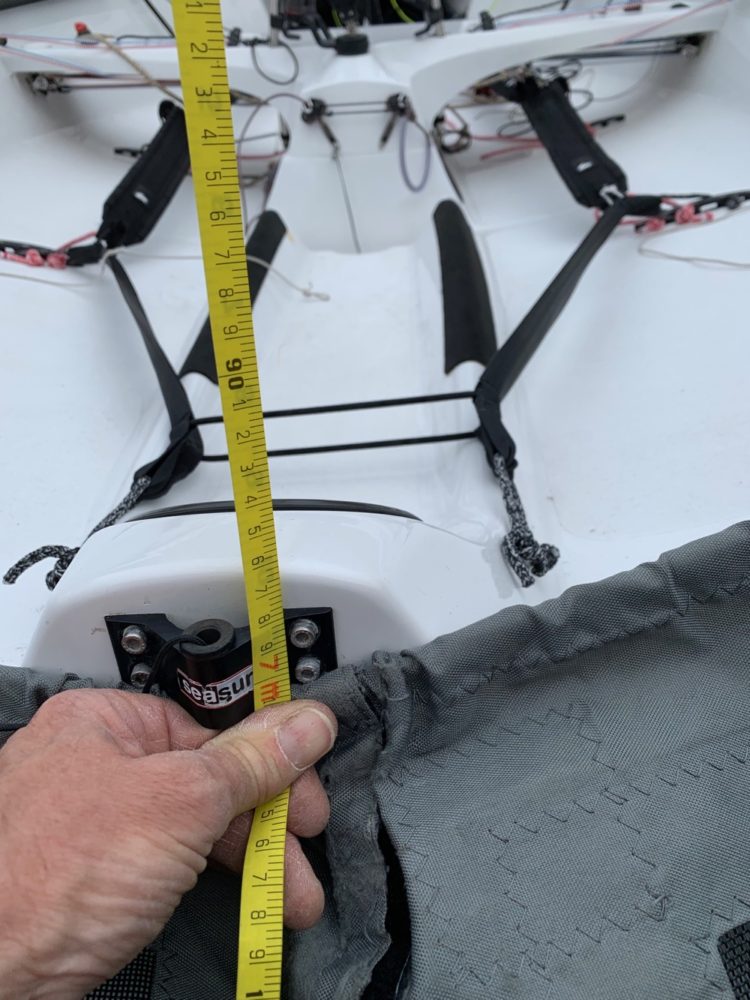 We leave 5 threads on our mast ram - never move it and drop one-half hole for moderate and one-half hole more for dogs off chains. I measure 28 on a new loos gauge.
We leave 5 threads on our mast ram - never move it and drop one-half hole for moderate and one-half hole more for dogs off chains. I measure 28 on a new loos gauge.  Don't forget to rotate your plastic parts of the loose gauge. As they wear out, they under-read. I have marked the worn parts of my wheels (with a black pen).
Don't forget to rotate your plastic parts of the loose gauge. As they wear out, they under-read. I have marked the worn parts of my wheels (with a black pen). 
 Bass Week, photo by Peter Mackin
Bass Week, photo by Peter Mackin Centerline check
Centerline check
I took a line from the bow to the transom - and also held up a thin line from the upper gudgeon to spy if the mast was upright. The jaws of my boat needed to be re-trimmed - I used some old sail battens - one from my Dad's old Merlin - which gave me a tinge of nostalgia.  Some other important tips: Please change your main halyard attachment to the top of your masthead (only works on newer masts)
Some other important tips: Please change your main halyard attachment to the top of your masthead (only works on newer masts)  Be aware that the crane itself damages the main halyard. Even Halitec's Technora/Polyester mix can be cut by the sharp edge of the sidewalls of the crane.
Be aware that the crane itself damages the main halyard. Even Halitec's Technora/Polyester mix can be cut by the sharp edge of the sidewalls of the crane.  Rigging - my first method of setting the shrouds was now perhaps comical. I would wind the mast ram back to enable me to attach the shrouds and then fight the mast ram back to its place again with the shrouds under tension. After chatting to the A team at Garda - there is a much simpler way. Release the jib tension and leave the mast ram well alone - and then lean on the main halyard. (you can even do it on your own if someone is holding the camera)
Rigging - my first method of setting the shrouds was now perhaps comical. I would wind the mast ram back to enable me to attach the shrouds and then fight the mast ram back to its place again with the shrouds under tension. After chatting to the A team at Garda - there is a much simpler way. Release the jib tension and leave the mast ram well alone - and then lean on the main halyard. (you can even do it on your own if someone is holding the camera)
The next big lesson we learned early on. The spreaders are measured from the mast track - not the sidewall or are they. I heard many different stories over the season. Out set up was: 405mm spreader length and 140mm deflection (we are 143Kg ). However, we have added just another half a hole on the spreader width - so now about 410mm. This gives us slightly more offwind speed but we do have to rake a little sooner.
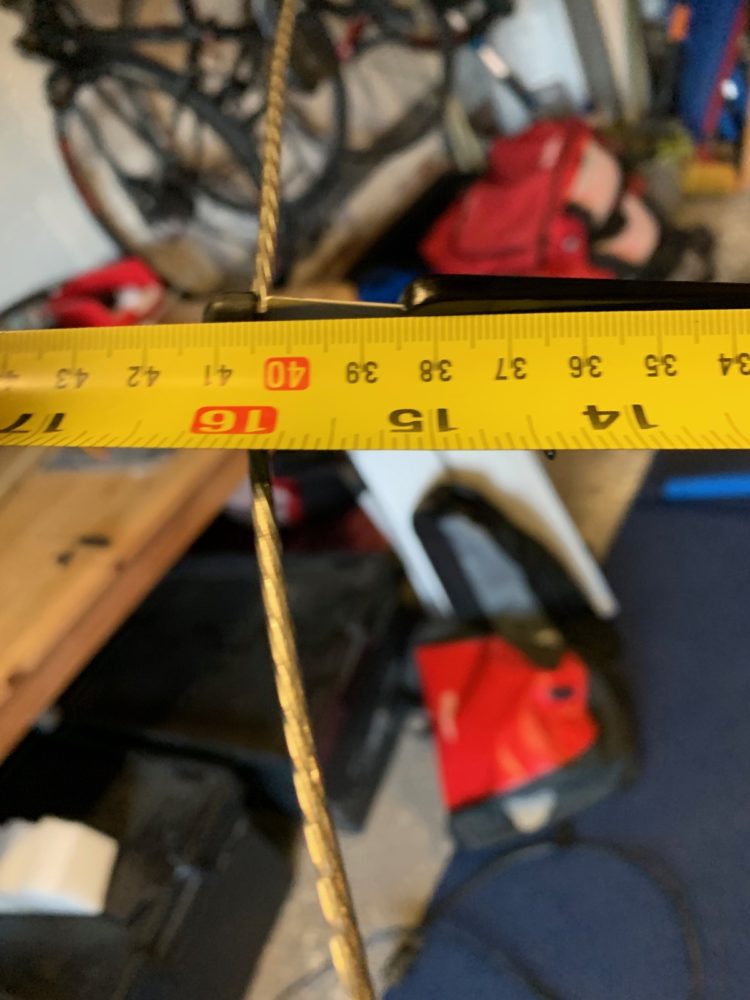
 Don't be put off sailing an RS400 if you are 140kg combined. The rig is very adaptable, the boat is a dream to sail and the fleet is competitive and friendly. Sarah thinks that it is a great boat for girl crews. :-) These settings are not definitive - I am thinking now of pushing the spreaders out a little more to gain some downwind speed and a little more height upwind... however, a 3rd at the UK and Irish Nationals would suggest we are pretty nearly there or are we? A windy week would have produced a very different result. The rope used on the RS400: Spinfast (4mm) - Spinnaker Halyard Jib Sheet (7mm black) and Main Sheet (8mm) Polilite Spinnaker Sheets - 6mm dia. AllSpecPro (red/white) Halitec - main halyard (21m)
Don't be put off sailing an RS400 if you are 140kg combined. The rig is very adaptable, the boat is a dream to sail and the fleet is competitive and friendly. Sarah thinks that it is a great boat for girl crews. :-) These settings are not definitive - I am thinking now of pushing the spreaders out a little more to gain some downwind speed and a little more height upwind... however, a 3rd at the UK and Irish Nationals would suggest we are pretty nearly there or are we? A windy week would have produced a very different result. The rope used on the RS400: Spinfast (4mm) - Spinnaker Halyard Jib Sheet (7mm black) and Main Sheet (8mm) Polilite Spinnaker Sheets - 6mm dia. AllSpecPro (red/white) Halitec - main halyard (21m)



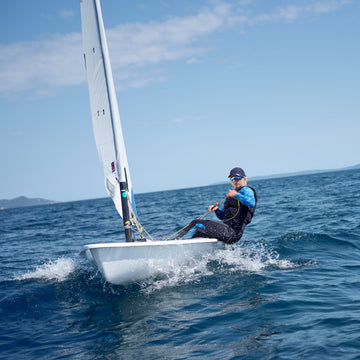
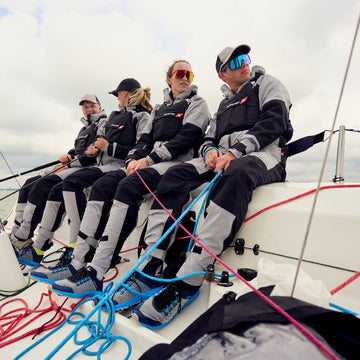



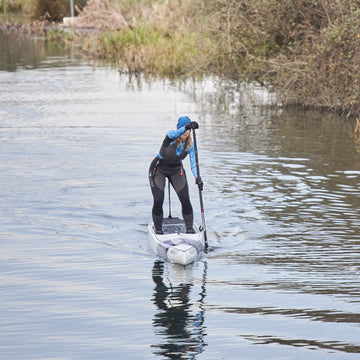
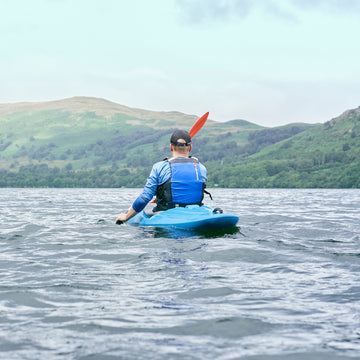
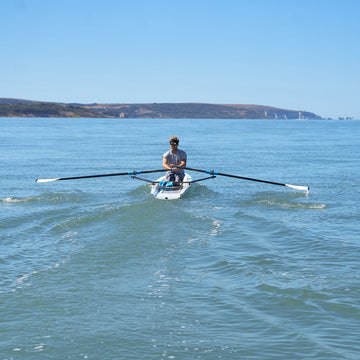
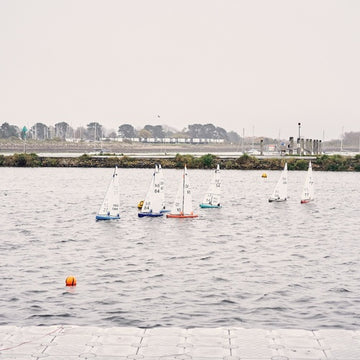








 Select Store
Select Store
 EU
EU
 US
US

1 comment
could you plz to sent how to be fixed the RS 400 from A to Z
my best regarading